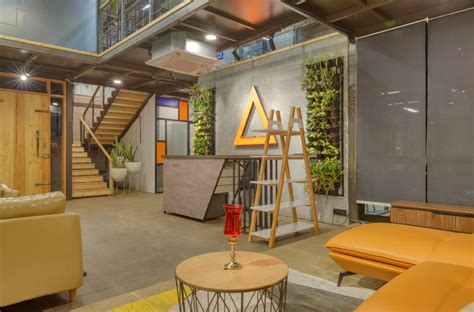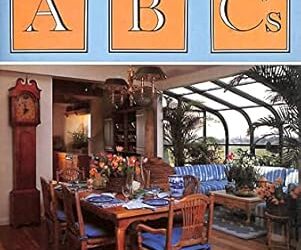Embark on a journey to explore the world of interior design near me. This introduction sets the stage for an insightful discussion on the significance of interior design, finding local designers, assessing services, collaborating effectively, and staying updated on the latest trends in the industry.
 . Prepare a list of questions beforehand to ensure you cover all relevant topics, such as their process, timeline, and fees.
. Prepare a list of questions beforehand to ensure you cover all relevant topics, such as their process, timeline, and fees.

Understanding Interior Design
Interior design is the art and science of enhancing the interior of a space to achieve a healthier and more aesthetically pleasing environment for the people using it. It involves creating a cohesive look and feel that reflects the client's style and meets their functional needs.Role of an Interior Designer
An interior designer is responsible for planning, researching, coordinating, and managing projects to create functional and beautiful interiors. They work closely with clients to understand their needs and preferences, then use their expertise to transform spaces into inviting and visually appealing environments.Key Elements of Interior Design
- Color:Color plays a crucial role in setting the mood and atmosphere of a space. Interior designers use color theory to create harmonious color schemes that enhance the overall design.
- Texture:Texture adds depth and dimension to a room. Designers incorporate a variety of textures, such as smooth, rough, shiny, and matte, to create visual interest and tactile appeal.
- Lighting:Proper lighting is essential for both function and aesthetics. Interior designers consider natural and artificial lighting sources to create a well-lit and inviting space.
- Furniture Placement:The arrangement of furniture can impact the flow and functionality of a room. Designers carefully plan the placement of furniture to maximize space and create a balanced layout.
Finding Local Interior Designers
When looking for interior designers near your location, there are several research methods you can utilize to find the right professionals for your project. Whether you prefer online platforms, directories, or social media, each option offers its own set of benefits and considerations.Research Methods
- Online Platforms: Websites like Houzz, Angie's List, or Thumbtack can provide a list of local interior designers along with reviews and portfolios.
- Directories: Local business directories such as Yelp or the Chamber of Commerce can also be a valuable resource for finding interior designers in your area.
- Social Media: Platforms like Instagram and Facebook are great for exploring the work of local interior designers and getting a feel for their style and aesthetic.
Benefits of Hiring a Local Interior Designer
- Personalized Service: Local interior designers can offer more personalized service and attention to detail, as they are more accessible for in-person meetings and consultations.
- Knowledge of Local Trends: A designer familiar with your area is more likely to understand local trends and preferences, ensuring that your space reflects the style of your community.
- Supporting Local Business: By hiring a local interior designer, you are supporting small businesses in your community and contributing to the local economy.
Assessing Interior Design Services
When looking to hire an interior designer, it's crucial to assess their services thoroughly to ensure they meet your needs and expectations. This involves reviewing their portfolio, checking reviews from previous clients, and verifying their expertise in the field.Evaluating Based on Portfolio, Reviews, and Expertise
Before making a decision, take the time to go through the designer's portfolio. This will give you a sense of their style, creativity, and the quality of their work. Additionally, read reviews from past clients to gauge their satisfaction levels and any potential issues to be aware of. Lastly, consider the designer's expertise in the specific type of project you have in mind, whether it's residential, commercial, or specialized areas like kitchen design or sustainable design.Setting Up Consultations
Once you have narrowed down your options, it's essential to set up consultations with potential interior designers. This is an opportunity to discuss your project in detail, ask questions, and get a feel for their communication style and approachEstablishing Budget and Timeline
One of the most critical aspects of any interior design project is establishing a budget and timeline. Be upfront about your financial constraints and discuss how the designer can work within those parameters. Setting a realistic budget will help avoid any surprises down the line, while establishing a timeline ensures that the project stays on track and is completed in a timely manner.Collaborating with Interior Designers
When working with an interior designer, effective communication is key to ensuring your design preferences, requirements, and vision are accurately translated into the final design. Here are some insights on how to collaborate with interior designers:Communicating Design Preferences
It is essential to clearly articulate your likes, dislikes, and overall vision for the space to your interior designer. Providing examples such as images, color swatches, or even sketches can help convey your style preferences effectively.Collaborative Process
- Regular Meetings: Schedule consistent meetings with your interior designer to discuss progress, provide feedback, and make decisions together.
- Brainstorming Sessions: Engage in brainstorming sessions where both you and the designer can share ideas and come up with creative solutions that align with your vision.
- Open Communication: Encourage open communication to address any concerns or make adjustments as needed throughout the project.
Significance of Feedback and Revisions
Feedback and revisions play a crucial role in the interior design process. It allows for refinements to be made based on your input, ensuring that the final design meets your expectations. Be open to providing constructive feedback and collaborating with the designer on revisions to achieve the desired outcome.Exploring Interior Design Trends
Keeping up with the latest interior design trends is essential for creating modern and stylish spaces. Interior designers play a crucial role in staying updated with evolving design trends to offer the best solutions to their clients.Current Interior Design Trends
- Color Schemes: Neutral tones like beige, gray, and white are popular for creating a calming and sophisticated atmosphere. Bold accent colors such as deep blues, emerald greens, and mustard yellow are also trending for adding a pop of color.
- Furniture Styles: Minimalist and Scandinavian furniture designs with clean lines and natural materials are in demand. Vintage and retro pieces are making a comeback, adding a touch of nostalgia to modern interiors.
- Decor: Sustainable and eco-friendly decor elements such as indoor plants, recycled materials, and energy-efficient lighting are gaining popularity. Mixing textures like velvet, metal, and wood creates a layered and visually appealing look.
Staying Updated with Design Trends
Interior designers stay updated with evolving design trends through various means such as:- Attending design exhibitions, trade shows, and seminars to discover new products and innovations.
- Following design influencers, blogs, and magazines for inspiration and insights into emerging trends.
- Participating in workshops and training programs to enhance their skills and knowledge in contemporary design practices.
Examples of Innovative Design Trends
- Biophilic Design: Integrating nature into interior spaces through the use of natural materials, indoor plants, and ample natural light.
- Smart Homes: Incorporating technology seamlessly into design elements for enhanced comfort and convenience.
- Maximalism: Embracing bold colors, patterns, and textures to create visually stimulating and eclectic interiors.












